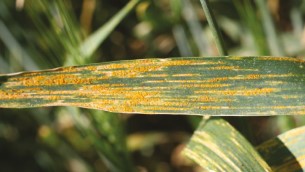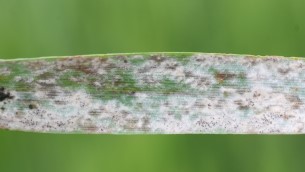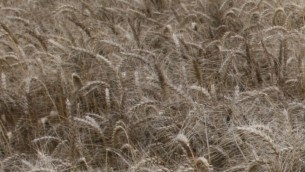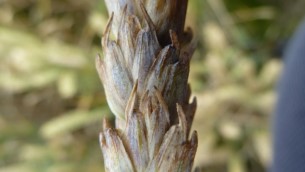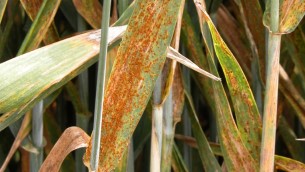Speckled Leaf Blotch

Speckled leaf blotch (SLB) is a common wheat disease occurring throughout NZ. SLB can be found from late winter but the main infection period is October onwards and this is when disease symptoms become obvious.
Look out for:
- Black surface spore cases
- Lesions with yellow edges
- Long narrow lesions in the early stages/li>
Risk factors:
- Crops emerged by mid-late May are at higher risk
- High rainfall
Look for black pycnidia (spore cases) on the surface of disease lesions. Also, look for long, narrow lesions constrained by leaf veins (once lesions coalesce this can be harder to see).
SLB infection is always a risk in New Zealand but three factors increase that risk. Firstly, cultivar choice: some varieties are more susceptible to SLB infection (often though, they are higher yielding). Second, planting date: wheat crops emerged before late May are at higher risk. Finally, high rainfall increases the risk from SLB, especially rainfall in Oct/Nov.
Yield losses can be high, often in the order of 30% but up to 80% in extreme cases.
Controlling speckled leaf blotch:
While speckled leaf blotch can be a devastating disease it can be very effectively controlled with the use of appropriate fungicides as illustrated below. The images, taken in December, compare a crop that was not treated with fungicide (Left) to a crop treated with a 3 spray fungicide programme consisting of Prosaro + Phoenix® GS31 | VIMOY iblon + Prosaro at GS39 | CALEY iblon GS65.
The trial was situated at Aorangi, Lower North Island, during spring 2020, with the main disease present being speckled leaf blotch. Some leaf rust was also noted. The very effective disease control is clearly visible and this resulted in a significant and very profitable yield increase.

A wheat crop which was not treated with any fungicide. Speckled leaf blotch, with also some leaf rust, has killed all green leaf. By mid-December the only green tissue remaining was the stem and ear meaning the crop’s yield potential was severely reduced.

An image of the same crop, taken on the same day, but this time treated with a 3 spray fungicide programme consisting of Prosaro + Phoenix® GS31 | VIMOY iblon + Prosaro at GS39 | CALEY iblon GS65. The very effective control of both diseases resulted in a great looking, healthy crop with excellent yield potential.











